70% of marketers actively invest in content marketing, as per a Hubspot survey. The same survey shows 24% of marketers plan on increasing their content marketing budget.
Meaning, there sure is some value to it — and you already know it if you have been in the marketing industry enough. As a matter of fact, you might already be investing in content marketing
If you implement content marketing strategies for yourself or your clients, you know that ideating, creating, publishing, and distributing content (across all channels where the target audience spends their time) is not a simple task.
You may even be one of the 60% of companies (Zazzle Media surveyed) who struggle with content creation, let alone the other facets of content marketing.
In that case, taking inspiration from other successful examples is the first thing you should do. Here are nine to start with:
Table of Contents
1. Hubspot’s ToFu content
Hubspot sells inbound marketing, sales, and service software. So it doesn’t come as a surprise that Hubspot is among the finest at implementing inbound marketing strategies.
- Its go-to content marketing type is organic SEO. And the results they have achieved are extraordinary — currently, it ranks for 3.2 million keywords according to Ahrefs data. These are keywords directly or indirectly related to sales, marketing, and servicing — i.e., the products they sell.

What kind of content do they publish/promote? ToFu (Top of Funnel) content like: - In-depth blogs related to their extensive niche. Each blog has multiple CTAs to get your email or influence you to sign up for their services.
- Lead magnets like e-books to collect potential customers’ data.
- Educational video content under Hubspot Academy. This includes many certification courses as well.
The Lesson: Pull people into your funnel with top-notch ToFu content.
2. GoPro’s videos
GoPro is an action camera company, and their content marketing strategy is, naturally, around videos and images. The aspect you can take inspiration from is its content-generating strategy: UGC (or User Generated Content).
Their YouTube channel has over 10 million subscribers and nearly 3 billion views! Over 17 million people follow their Instagram page. And what’s the content they post? Mostly user-generated!
GoPro publishes images, videos, and/or compilations of videos taken by adventurers (on GoPro) doing stuff people want to do and record themselves doing it.

The Lesson: If possible, always promote UGC. Its benefits are more than just not having to think of content ideas.
3. Wendy’s’s tweets
Wendy’s is a US-based fast-food chain. So, anyone and everyone is their customer. And where can they find anyone and everyone?
On social media!
Their content strategy to have all the eyeballs on their content/brand is to entertain and engage.
Wendy’s regularly ‘quote tweets’ and ‘replies’ to their customers, like this (entertaining, engaging, screenshotable, shareable, memeable):
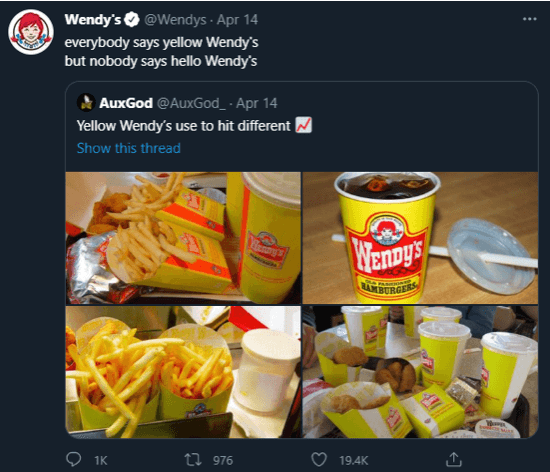
Sometimes — actually, VERY rarely — such tweets end up getting a response like this:

That “18 Million” response got them exposure to tens of millions of people just because they engaged with their customers and were not boring.
The Lesson: Engage with your customers and build content on top of what people share about your brand.
4. Coca-Cola’s “Share a Coke.”
The first three examples focused on the content marketing types (Hubspot – SEO/Blog, GoPro – Video, and Wendy’s – Social). Let’s take a specific campaign example. Coca-Cola’s “Share a Coke” campaign is an example of the importance of personalization in content marketing.
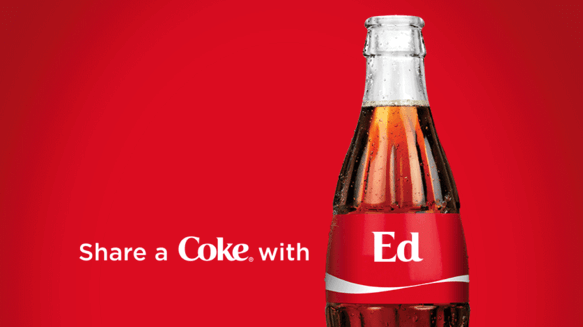
In 2011, Coca-Cola ran a campaign in Australia, wherein they printed the 150 most common names on coke bottles. Then they encouraged people to share it with their friends & family with the same name as on the label.
The campaign results were so astonishing that the campaign was launched worldwide, and you can customize a coke bottle even today.
The Lesson: Personalize & try to reach people’s hearts.
5. Rolex
Rolex’s content revolves around showcasing the product. And it’s pretty on-brand.
Their social media feeds show exactly what they are known for: luxury, quality, brand value, timelessness. They won’t go around and reply to tweets or reshare a stupid Insta story like Wendy’s or McDonald’s would.
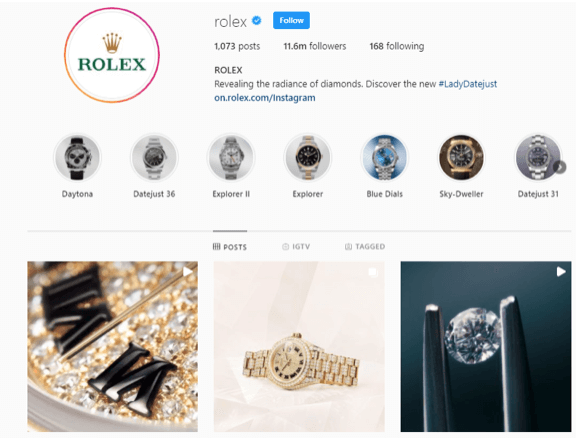
The Lesson: Stay on-brand.
6. Netflix
There’s a content marketing lesson in everything Netflix does…whether it is giving the customers what they want or personalizing each customer’s experience with the power of data. However, the least you can learn and implement is behaving on social media how regular people behave on social media.
E.g., Sharing tweets like this:
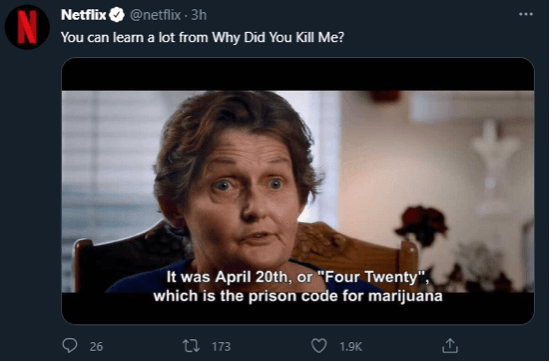
Or having an Instagram caption like this:
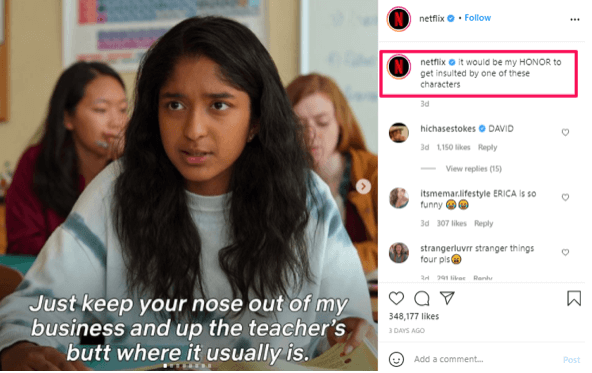
The Lesson: Stay relevant to the platform. What works on Insta doesn’t necessarily work on LinkedIn.
7. Oreo’s real-time genius
Remember the 2013 Super Bowl held in New Orleans? A power outage led to a 34-minute halt in the game. At that time, Oreo came up with this:

It’s one of the finest examples of real-time marketing, a facet of content marketing (like replying to tweets) that requires instant creativity & response to what’s happening in real-time. Such content pieces cannot be pre-planned, nor can they be postponed.
The Lesson: Look beyond your content calendar. New, attention-grabbing opportunities arrive every day in the form of memes, news, trends, etc.
8. Glossier’s conversations
What Wendy’s does with its Twitter, Glossier takes a step further. Glossier is a New York-based beauty brand that uses Twitter as a normal teenage girl would.

The only difference is beauty products are mostly the center of conversations. Other than that, they use slang, emojis, and the casual tone you wouldn’t expect from a business. In fact, you won’t be able to differentiate it from their users’ accounts if it wasn’t the official handle.
All Glossier users feel like they are part of the community & hence give them UGC. The conversations they have on social make for Glossier’s entire organic content marketing.
The Lesson: Build community, not followers. Use the users’ language/slang to be a part of the group.
9. Gary Vaynerchuk’s Wine Library
Gary Vaynerchuk (commonly known as Garyvee) is a true pioneer in the personal branding space. He currently runs VaynerMedia, a large-size media agency, and is an early investor in some tech giants you use daily.

His whole journey is a massive example of content marketing, but let’s just stick to his first online content marketing venture.
To promote Wine Library, one of the earliest wine e-commerce stores, Gary launched WineLibraryTV on YouTube back in 2006. He posted long-form video episodes around different types of wines consistently for almost five years. This helped him grow from 4 million in sales to 60 million.
The Lesson: Consistency is crucial.
Final Words
These content marketing examples were to give you a broader perspective on how to go about it.
There’s no one-size-fits-all in content marketing, but these lessons can help you create a better marketing impact:
- Have the best possible top-of-the-funnel content.
- User-generated content can take some of the creative load off your shoulders. Plus, it has many benefits ranging from increased awareness to bettered trust & relationships with customers.
- Stay relevant to the platform. Talk in the language your customers use on that particular platform.
- Try to personalize the message as much as possible. (E.g., this is a general article, but the usage of “you” makes you feel more connected than it would with “one” or “marketer.”)
- Have a content calendar, but be flexible. Real-time opportunities are often low-hanging fruits that give great returns.
- Content marketing isn’t just blog content! It’s social content and video content and even user-generated content.
- And most importantly: stay consistent and on-brand!

